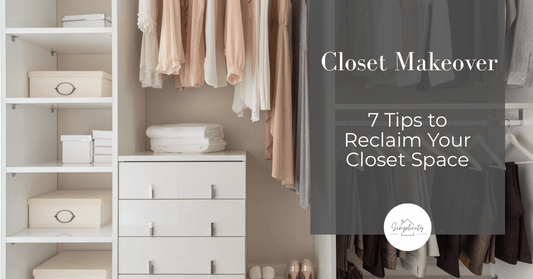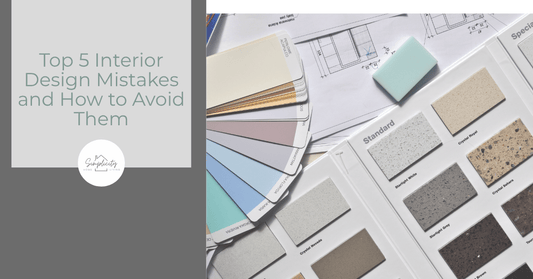Embarking on a minimalist lifestyle might seem daunting, especially when your home doubles as a jungle gym for kids or a storage unit for memories. This blog post is here to guide you through decluttering, making minimalist living accessible, even in a busy family home.
By focusing on the essentials, you can transform your space into a serene haven where every item has a purpose—beyond being tripped over. Let’s explore practical decluttering techniques that help maintain sanity and space, making room for more quality family time, not just more stuff.
Understanding Minimalism for Families
Minimalism with a family isn't about stripping down to bare walls and a single chair in the living room—it’s about creating more room for dance-offs and pillow forts. It’s a lifestyle that values quality over quantity, focusing on what truly enhances family life and ditching the duplicative toys and rarely used gadgets.
Adopting a minimalist mindset means setting priorities and making intentional choices, like opting for a family game that everyone enjoys over shelves crammed with untouched board games. This approach helps reduce the clutter-induced stress that sneaks into our busy family lives, making cleaning a breeze and leaving more time for what truly matters—like attending school plays or enjoying a family movie night.
By decluttering, you not only reclaim physical space but also model for your children how to value quality and simplicity. This can lead to a calmer, more focused environment, where everyone learns to appreciate what they have, rather than always wanting more.
The Mindset of Decluttering
Adopting the decluttering mindset requires more than just a desire to clear space; it requires a shift in how we perceive our possessions, especially in a household bustling with family activities. This shift involves seeing beyond the immediate utility of items and understanding the impact they have on our living environment and mental well-being.
Embrace the 'One In, One Out' Rule: A practical approach in a family setting is the 'one in, one out' rule. For every new item that enters your home, one old item must go. This helps maintain a balance and prevents accumulation. It's like updating your wardrobe: if a new shirt comes in, an old one you haven't worn in a year gets donated. Apply this rule across toys, books, and clothes to keep things fresh without adding to the clutter.
Value Space Over Stuff: To truly embrace minimalism, start valuing space more than stuff. Think of your home as a haven of tranquility—a place for your family to relax, play, and grow together, not just store things. This mindset helps prioritize what adds value to your family’s life and what merely fills up space.
Involve the Family: Decluttering should be a family affair. Encourage children to participate by making decluttering sessions fun and rewarding. Perhaps, for every bag of toys they choose to donate, they earn a special family activity. This not only helps in reducing clutter but also teaches them about generosity and the importance of simplicity.
Practical Decluttering Techniques
Room-by-Room Guide:
- Kitchen: Begin with the heart of the home. Keep only multipurpose appliances and essentials. The waffle maker gathering dust? Maybe it’s time to find it a new home. Use drawer organizers to keep necessary tools within easy reach but out of sight.
- Living Room: This room should be a sanctuary, not a storage area. Choose furniture with built-in storage for children’s toys or books. Opt for a minimalist aesthetic with neutral colors and functional decor. Regularly review what accumulates in communal areas and make it a habit to clear out items that no longer serve a purpose.
- Bedroom: Bedrooms should promote rest. Limit the furniture to essentials—a bed, a dresser, and perhaps a chair. Keep decorations minimal; perhaps a family photo or a piece of art that brings joy. Teach children to keep their rooms tidy with designated spaces for their belongings.
- Bathroom: Bathrooms can easily become cluttered with products. Stick to essentials and regularly clear out expired or unused items. Limit each person to one or two sets of towels, stored neatly on shelves or hooks.
Seasonal Decluttering: Engage in seasonal decluttering to address items that are only used part of the year. This not only keeps your home organized but also prepares you for changes in season without the last-minute panic.
Maintain Momentum: Set decluttering dates on your calendar as recurring events. Treat these like appointments, emphasizing their importance to maintaining a clutter-free home. Over time, decluttering will become a regular part of your family’s rhythm, just like spring cleaning or preparing for the holidays.
What Decluttering Looks Like
Example 1: The Johnson Family - With two children under ten, the Johnsons struggled with a constant influx of toys and clothes. By instituting the 'one in, one out' rule and involving their children in regular decluttering days, they managed to transform their home into a clutter-free zone that encourages creativity and family bonding.
Example 2: Maria and Tom - A couple who decided to downsize after their kids moved out. They focused on keeping only those items that had sentimental value or were necessary for their daily lives. This not only simplified their cleaning routine but also made room for hobbies they had put off, like painting and writing.
Example 3: Living under one roof, the Nguyen family, spanning three generations, faced clutter from toys to keepsakes. They embraced collective decision-making and designated spaces for belongings, streamlining their environment and strengthening bonds. This approach taught them that minimalism is about enhancing life's quality through intentional living, not merely reducing possessions.
Maintaining a Minimalist Home
Keeping a minimalist home is an ongoing process, especially with a family. It’s not just about a one-time purge; it’s about creating habits that sustain a clutter-free environment.
Daily Routines: Incorporate small, manageable decluttering tasks into your daily routine. This could be as simple as a five-minute nightly reset where each family member picks up items that aren’t in their proper place.
Thoughtful Purchasing: Before bringing a new item into your home, ask, "Do we really need this?" If an item is necessary, consider what it will replace. Making thoughtful purchasing decisions can prevent clutter from creeping back in.
Regular Reviews: Every few months, have a family meeting to decide if anything can be donated or sold. This not only keeps your space minimal but also involves the whole family in maintaining your minimalist lifestyle.
Conclusion
Embarking on a minimalist journey is like setting off on a great adventure with your family. It’s about discovering the space and peace that come from having less, and learning to value experiences over possessions. Decluttering isn’t just about getting rid of things; it’s about making room for growth, creativity, and contentment.
Start small, perhaps with a single drawer or shelf, and experience the benefits of minimalist living.
Remember, minimalism isn’t about sacrifice—it’s about finding more freedom and joy in the spaces you create.
So, take the first step today, and transform your home into a haven of simplicity where every item has its place and every moment counts.










